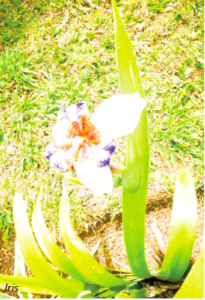While most owners think the keen sense of smell of their furry friends helps in detecting poisonous plants, it’s not always the case, and preventative or proactive measures can always save man and beast from coming to grief.
Photos by Anna Gamboa
The death of Freddy the basset hound came as a shock to his owner Patty (not her real name), and after she had her pet laid to rest, she encouraged her fellow pet owners on Facebook to take a good look at their surroundings. Freddy apparently had been gnawing at a variegated plant, a variety popular in many homes and offices for its easy cultivation and maintenance, but harbored lethal toxins in its leaves and stems.
Pet owners would do well to educate themselves on greens that may pose a danger to the four-legged members of their family, and either avoid purchasing such plants for the home or perhaps relocate the poisonous offender to another area. Dr. Nielsen Donato of Vets in Practice identified some plants within easy reach of Patty’s remaining dogs, which were uprooted or relocated to a different area of the house.
Pointed out were the potted horsetails, ferns, plants with bulbs like lilies or tulips―these were poisonous or potential dangers. The garden’s palm trees were deemed generally safe, but the vet warned that its nuts were toxic, so the househelp would have to dispose of them. Asked about having to educate the staff about these plants, Patty said her family’s simple solution consisted of informing them that the dogs, especially the puppies, can’t chew on anything that she and her family didn’t give for them to play with or eat.
Common Plants to Watch Out For

Aloe vera may be handy for burns and skin care for humans, but its saponins are toxic for dogs and cats. Poisoning symptoms include diarrhea, change in urine color, tremors, depression and vomiting.
Baby’s breath, while cute to see in a floral bouquet, can cause trouble in the form of vomiting and diarrhea for cats and dogs.
Blue green algae may be found in ponds or brackish water, and may harbor microcystins and anatoxins (damaging for your pet’s liver) that may be ingested if the pet swims or drinks from the algae-infected water.
Dieffenbachia or dumb cane is popular for its showy leaves and low maintenance. Unfortunately, its leaves, stems and roots contain insoluble calcium oxalate, which is lethal for you and your pet. The immediate symptom of pet poisoning in this case is pawing at the mouth or face, drooling, difficulty swallowing, foaming at the mouth and vomiting.

Lilies, depending on their variety contain lycorine and/or other alkaloids which are poisonous to a certain degree, and are often recommended to be relocated away from easy reach of any pet. Other plants that grow from bulbs (the most poisonous part), like tulips, are also deadly.
Always bring a sample of the plant to the vet if you catch your dog or cat ingesting leaves or petals―so the medical professional can treat the condition accordingly. Poisoning symptoms include excessive salivation, diarrhea, vomiting―and cases of ingesting large amounts of plant matter may result in cardiac arrhythmia, convulsions, tremors and low blood pressure.

Chrysanthemums and other types of mums may seem innocuous to humans, but are trouble for dogs. Symptoms of poisoning include uncoordinated movements, a skin rash (dermatitis), hypersalivation, vomiting and diarrhea.
Responsible pet ownership requires knowing where you can easily bring your fur baby for emergency care. Have a plan, which includes keeping the number of the vet in plain sight, so you don’t get flustered when something untoward happens.
If you’re tempted to administer first aid for your pet by giving home remedies that work for humans, DON’T, unless it’s under your vet’s instructions―you may endanger your pet more with well-intentioned procedures that may worsen his condition. Don’t drive your pet to the vet by yourself. Someone should be the designated driver, and someone should supervise your pet―two separate tasks which require singular focus.
When it comes to the peaceful coexistence of flora (your plants) and fauna (your pet), it’s best to invest in a little research, especially when your dog or cat is fond of gnawing or digging around the house. Take photos of the plants in your home and/or garden and bring them to the vet the next time your pet is due for a checkup, or spend an hour or two online verifying your photos against data from reputable websites.
In this case, the ounce of prevention will be worth much more than the pound of cure, or dealing with any unpleasant consequences from unforeseen interactions between plant and beast.
This appeared in Animal Scene’s January 2016 issue.






